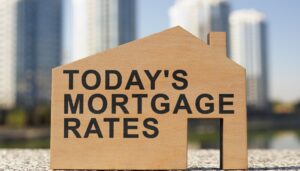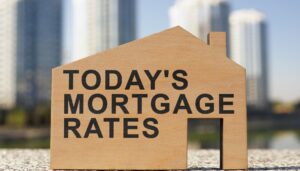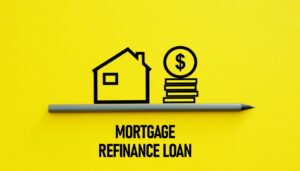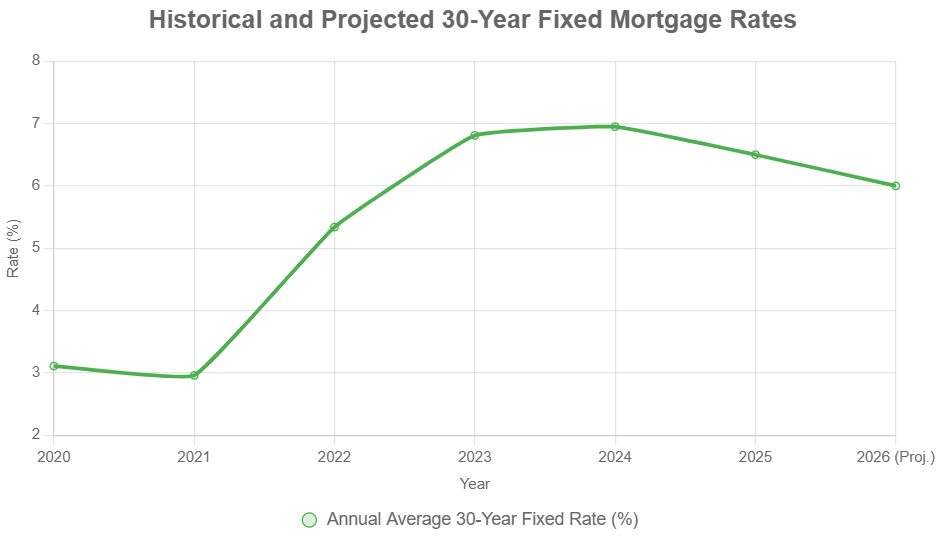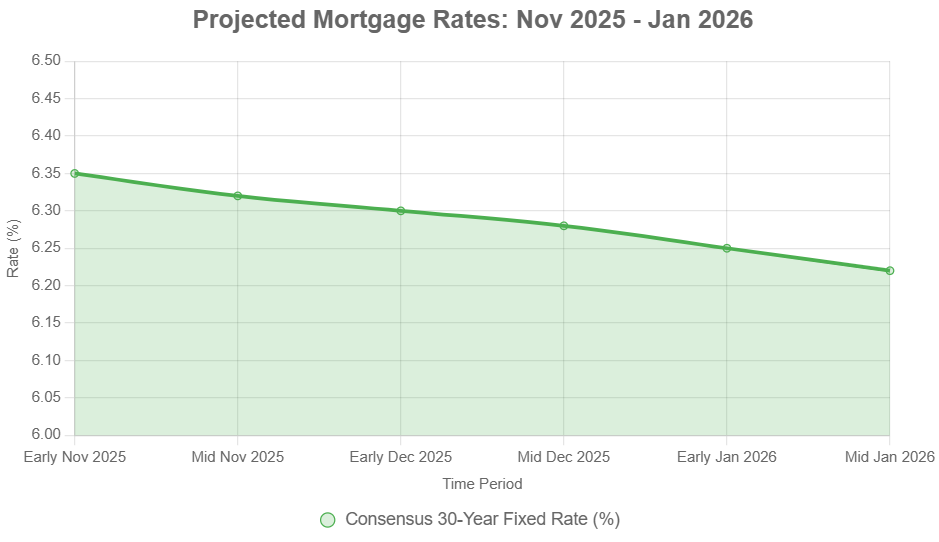It's November 17th, and if you're thinking about buying a home or refinancing, you're probably wondering what the latest mortgage rates look like. Well, the good news is that rates are still sitting in a much more favorable spot than they were at the beginning of the year. As of today, the average 30-year fixed mortgage rate is 6.07%, according to Zillow. For those looking at shorter terms, the 15-year fixed rate is currently at 5.54%. The question on many minds now is: with these rates, is it time to jump in or is it better to wait? Let's dive in.
Today's Mortgage Rates, November 17: Rate Declines Fuel Buyer and Refinance Activity
What the Numbers Tell Us Today
To give you a clear picture, let's break down the average rates as of November 17th, based on data from Zillow. It's important to remember these are national averages, and your actual rate will depend on your specific creditworthiness, down payment, and the lender you choose.
Current Mortgage Rates (National Averages – November 17, 2023)
| Loan Type | Average Rate |
|---|---|
| 30-year fixed | 6.07% |
| 20-year fixed | 5.99% |
| 15-year fixed | 5.54% |
| 5/1 ARM | 6.21% |
| 7/1 ARM | 6.29% |
| 30-year VA | 5.60% |
| 15-year VA | 5.22% |
| 5/1 VA | 5.20% |
It's also worth looking at refinance rates, as many homeowners are considering this to lower their current payments.
Current Mortgage Refinance Rates (National Averages – November 17, 2023)
| Loan Type | Average Rate |
|---|---|
| 30-year fixed | 6.20% |
| 20-year fixed | 6.26% |
| 15-year fixed | 5.74% |
| 5/1 ARM | 6.42% |
| 7/1 ARM | 6.58% |
| 30-year VA | 5.58% |
| 15-year VA | 5.45% |
| 5/1 VA | 5.39% |
Notice that refinance rates are generally a bit higher than purchase rates. This is common, as lenders may view a refinance as slightly more of a risk.
Understanding the Forces at Play
Why are rates where they are, and what can we expect moving forward? It's a complex dance between economic indicators, Federal Reserve policy, and global events.
- Federal Reserve's Influence: The Federal Reserve has been actively managing interest rates to combat inflation. While they've made moves to adjust the federal funds rate, mortgage rates don't always move in perfect lockstep. Other factors, like the Fed's efforts to reduce its balance sheet, can also put upward pressure on mortgage rates. This tells me that even if the Fed signals future rate cuts, we might not see mortgage rates drop immediately or dramatically.
- Economic Signals: Look around, and you'll see mixed economic signals. Inflation has been a major concern, but we're also seeing signs of the economy potentially cooling. Trade issues, including tariffs, and global uncertainties can also cause mortgage rates to become more unpredictable. When the economy shows signs of slowing down, it can sometimes lead to lower borrowing costs. It’s a constant balancing act that lenders and investors are watching closely.
- The Housing Market's Reality: The affordability crunch is still a big deal. Home prices have climbed significantly over the past few years, and even with these more recent rate improvements, the cost of buying a home remains a hurdle for many. This has created a “lock-in effect.” Think about it: if you bought a home a few years ago with a 3% mortgage, why would you sell now to buy another home at 6%? This reluctance to move is impacting the supply of homes on the market, which in turn affects prices and demand. You might have even heard discussions about innovative mortgage ideas, like longer-term loans, which are a sign of how policymakers are trying to address affordability.
Forecasting Future Rates: A Crystal Ball Game?
Predicting mortgage rates with perfect accuracy is nearly impossible—even for the experts! However, looking at forecasts from institutions like Fannie Mae and Wells Fargo, the general sentiment is that rates might hover in the 6% to 6.5% range for the next couple of years. They anticipate gradual decreases, but a significant return to the sub-3% or 4% rates we saw a few years back isn't on the immediate horizon. This means that if you're looking to buy, it's wise to budget based on current or slightly fluctuating rates, rather than expecting a steep drop.
Related Topics:
Mortgage Rates Trends as of November 16, 2025
Mortgage Rate Predictions for the Next 30 Days: Nov 10 to Dec 10, 2025
Mortgage Rates Predictions for the Next 12 Months: Nov 2025 to Nov 2026
Mortgage Rates Predictions for Next 90 Days: October to December 2025
The 15-Year vs. 30-Year Decision: What's Your Style?
One of the fundamental choices when getting a mortgage is deciding between a 15-year and a 30-year fixed-rate loan. Both have their distinct advantages, and the “better” choice truly depends on your personal financial situation and what you're trying to achieve.
The 30-Year Fixed Mortgage:
- Pros: The biggest draw here is the lower monthly payment. This offers more flexibility in your monthly budget, which can be a lifesaver, especially for first-time homebuyers or those looking to stretch their buying power. It also provides a financial cushion, meaning you have more breathing room if unexpected expenses pop up. Furthermore, if you plan to invest the difference in monthly payments, you could potentially gain more by investing elsewhere, though this comes with investment risk.
- Cons: You'll pay significantly more interest over the life of the loan. Building equity in your home will also happen at a slower pace.
With the current average rate at 6.07%, a 30-year loan offers significant monthly payment relief compared to the higher rates seen earlier this year.
The 15-Year Fixed Mortgage:
- Pros: The primary benefit is saving a substantial amount of money on interest. Because you're paying the loan off faster, the total interest paid is much lower. You also build equity in your home much more quickly, which can be beneficial if you plan to move or want to tap into your home's value sooner.
- Cons: The monthly payments are higher. You need to ensure your budget can comfortably accommodate these larger payments.
At 5.54%, the 15-year fixed rate is attractive for those who can manage the higher payment and want to be mortgage-free sooner.
Essentially, if your priority is a lower monthly payment and budget flexibility, the 30-year is likely your go-to. If you can afford the higher payments and want to pay off your home faster while saving a ton on interest, the 15-year is a fantastic option. I often advise clients to crunch the numbers. See what both payment options look like in their budget. Sometimes, people can even afford the 15-year payment, or can choose a 30-year and pay extra each month as if it were a 15-year.
The Bigger Picture: What Does “Good” Mean for Mortgage Rates?
It's easy to get caught up in the day-to-day fluctuations, but it's also useful to have a historical perspective. While rates in the mid-5% and low 6% ranges feel higher than they did in 2020-2021, they are still relatively low compared to historical averages. Think back to the 1980s, when mortgage rates regularly hit double digits! So, while we may not return to the all-time lows anytime soon, today's rates are far from the worst they've ever been.
My Takeaway
As of November 17th, the mortgage market is offering a more encouraging environment than we saw earlier this year. The average 30-year fixed rate around 6.07% and the 15-year fixed rate at 5.54% provide real opportunities for both buyers and those looking to refinance.
The key is to understand your own financial goals and capacity. Don't get too swayed by day-to-day news. Instead, focus on what a specific rate means for your monthly budget and your long-term financial plan. If you’re a buyer, explore what you can afford with current rates. If you're a homeowner, compare refinance options to see if you can save money.
The market is still dynamic, but for now, we're in a much better place than many anticipated, and that's certainly something to consider as you navigate your homeownership journey. I believe that making an informed decision now, based on your personal circumstances, is more important than trying to perfectly time the market for a future rate drop that may or may not materialize as expected.
Want Stronger Returns? Invest Where the Housing Market’s Growing
Turnkey rental properties in fast-growing housing markets offer a powerful way to generate passive income with minimal hassle.
Work with Norada Real Estate to find stable, cash-flowing markets beyond the bubble zones—so you can build wealth without the risks of ultra-competitive areas.
🔥 HOT NEW LISTINGS JUST ADDED! 🔥
Talk to a Norada investment counselor today (No Obligation):
(800) 611-3060
Also Read:
- Mortgage Rates Predictions Backed by 7 Leading Experts: 2025–2026
- Mortgage Rate Predictions for the Next 3 Years: 2026, 2027, 2028
- 30-Year Fixed Mortgage Rate Forecast for the Next 5 Years
- 15-Year Fixed Mortgage Rate Predictions for Next 5 Years: 2025-2029
- Will Mortgage Rates Ever Be 3% Again in the Future?
- Mortgage Rates Predictions for Next 2 Years
- Mortgage Rate Predictions for Next 5 Years
- Mortgage Rate Predictions: Why 2% and 3% Rates are Out of Reach
- How Lower Mortgage Rates Can Save You Thousands?
- How to Get a Low Mortgage Interest Rate?
- Will Mortgage Rates Ever Be 4% Again?
